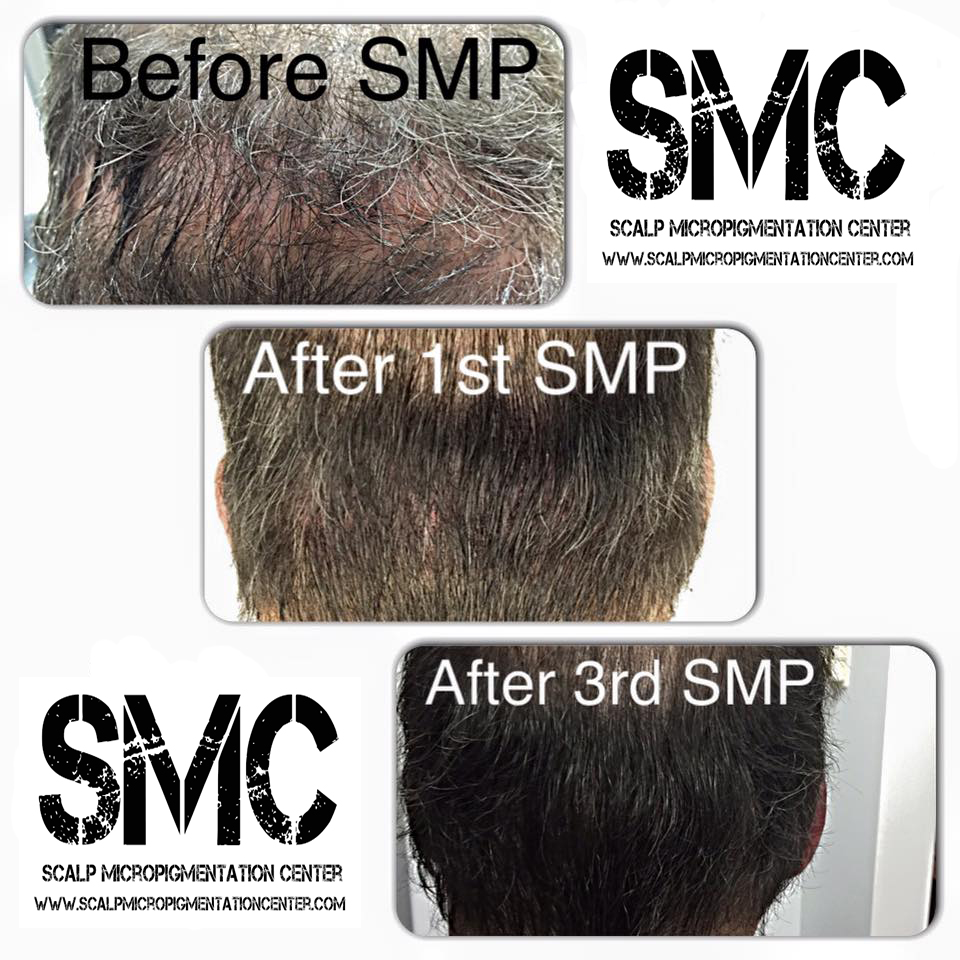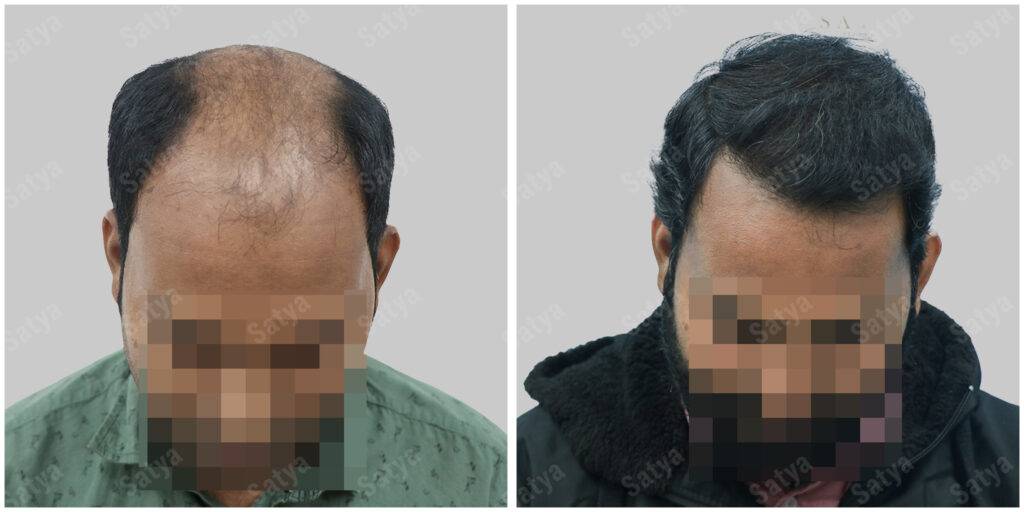Scalp Micropigmentation (SMP): Exploring its Science Behind
In an age dominated by the visual allure of social media, appearance holds a paramount role. With a multitude of cosmetic treatments promising to accentuate natural beauty, Scalp Micropigmentation, or SMP, has emerged as a remarkable contender. SMP, a technique that deposits micro pigments onto the scalp through an electric tattooing device, brings the illusion of voluminous hair to life. Let’s uncover its intricacies and potential.

Is SMP a mere Illusion to Fuller Looking Hair?
SMP isn’t just a cosmetic procedure; it’s an art form that transforms appearances. Using the precision of an electric tattooing device, this technique deposits pigments onto the scalp, conjuring the appearance of thicker hair. Essentially, SMP serves as a form of permanent makeup for the scalp, ideal for concealing bald spots, birthmarks, scars, and even creating the illusion of a trendy buzz cut on a shaved head. This non-invasive procedure generally requires no anesthesia, making it a comfortable choice for those seeking a hair transformation.
Does SMP Promote Hair Growth?
Central to SMP’s magic is the intricate technique of pointillism. Tiny dots, meticulously layered on the scalp, replicate the natural shadows of hair. These dots, in varying shades of black, create an astonishingly realistic depth and definition, resulting in a scalp that appears fuller. Importantly, SMP doesn’t influence the growth or loss of hair. It’s a masterful camouflage technique that tricks the eye into seeing a fuller & denser hair.
Who all can benefit from SMP?
SMP, akin to semi-permanent makeup, caters to a diverse range of individuals seeking to amplify their hair’s appearance. It offers a lifeline for those grappling with conditions such as:
- Alopecia Areata: Especially in stubborn, long-standing cases.
- Scarring Alopecia: Concealing scars on the scalp.
- Female Pattern Hair Loss: Addressing thinning hair in women.
- Male Pattern Hair Loss: Easing the impact of androgenetic alopecia.
- Chemotherapy-Induced Hair Loss: A boon for those in recovery.
- Post-Hair Transplant Repair: Enhancing transplant results.
- Hormonal Hair Loss (e.g., PCOS): Providing a solution to hormone-induced hair issues.
- Scalp Scars or Birthmarks: Concealing imperfections with finesse.

The Procedures involved in SMP
Before undergoing SMP, our doctors recommend washing your hair and scalp. The procedure can be done without anesthesia in most of the cases, however, if required it can be done under local anesthesia as well depending on the patient’s sensitivity. Scalp micropigmentation is similar to a tattoo making process but less painful.
A medical-grade pigment gets deposited on the desired areas of the scalp with the help of an electronic tattoo device. The dots vary in size, angle, and depth to provide a natural, hair like appearance.
One session of SMP may take up to five hours, depending upon the size of the treatment area. The patient may also need a touch-up session after a fortnight to get the desired results and intensity.
Since it is a non-invasive procedure without anesthesia, patients can resume their daily activities immediately after the treatment.
Recovery and Aftercare
Post-SMP, patient commitment to aftercare is vital. A set of instructions guides this process, ensuring pigment retention and maximum benefit. These guidelines include using mild shampoos, moisturizing lotions, and minimizing activities that induce sweating. Saunas, steam rooms, and swimming should be avoided temporarily, as the treated area remains tender and sensitive.
Risk and side effects
The treatment is done under the supervision of a qualified dermatologist with highly sophisticated machines. Hence, the risks are very low. It uses medical-grade pigment that is better than regular tattoos. It may last up to 1-2 years in good intensity and then gradually fade out.
Some of the side effects, though rare, include:
- Allergic reaction to the cosmetic pigments
- Infection from unsterilized needles (Unlikely if done under a dermatologist’s care)
- Unnatural or undesirable appearance after treatment
- Swelling and redness in the treated area
- Sunburn on the treated area, as it is tender for some days and needs sun protection
Caution
People prone to develop keloids (scars that grow large) should not get Scalp Micro Pigmentation. If you have a history of allergy to pigments, you should first try a small test patch before getting full coverage.
Book an appointment
Consultation

Repair

Blog

Galleries

Frequently Asked Questions
Scalp Micropigmentation (SMP) is a non-invasive cosmetic procedure that deposits micro pigments onto the scalp using an electric tattooing device. It creates the illusion of thicker hair, making it suitable for concealing bald spots, scars, and creating various hairstyles.
No, SMP does not promote hair growth. It is a camouflage technique that uses tiny dots to replicate the appearance of hair follicles, giving the illusion of fuller hair. SMP does not influence the growth or loss of natural hair.
SMP is beneficial for individuals dealing with conditions such as alopecia areata, scarring alopecia, female and male pattern hair loss, chemotherapy-induced hair loss, post-hair transplant repair, hormonal hair loss (e.g., PCOS), and those seeking to conceal scalp scars or birthmarks.
The SMP procedure involves depositing medical-grade pigment onto the scalp using an electronic tattoo device. Multiple sessions may be required, and the duration depends on the treatment area's size. Patients can typically resume daily activities immediately after the procedure.
After SMP, proper aftercare is essential. Patients should follow instructions provided, including using mild shampoos, moisturizing lotions, and avoiding activities that induce sweating. Temporary avoidance of saunas, steam rooms, and swimming is recommended to protect the treated area.
The risks of SMP are low when performed by a qualified dermatologist with sophisticated equipment. Possible side effects include allergic reactions to cosmetic pigments, infection (unlikely under professional care), undesirable appearance, swelling, redness, and temporary sun sensitivity. People prone to keloids or pigment allergies should exercise caution and consider a small test patch before full coverage.




